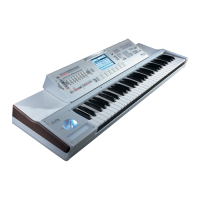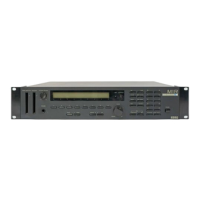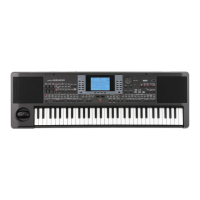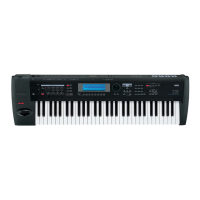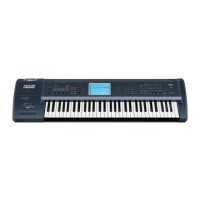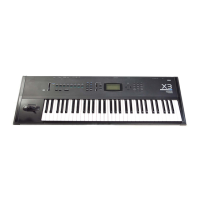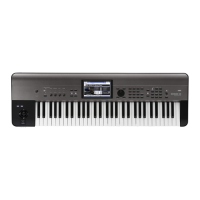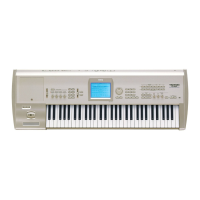Combination mode
23
Menu Commands
You can click the “▼” located at the right of “IFX,” and
choose one of the following commands.
Load
Lets you select a program.
The browser will appear in the same way as when you click
the [BROWSER] switch. (
☞ “The Browser” on page 16)
Write
Writes (stores) edited program data into the M1 software
synthesizer’s internal memory.
☞ “Writing to internal memory” on page 69.
Search Similar Program
The browser will appear with the same instrument and
sound character search settings as the currently-loaded pro-
gram. This is a useful way to find another sound that’s simi-
lar to the currently selected one. (☞ “The Browser” on page
16)
Copy
Copies the settings of the currently selected program to the
clipboard.
Settings not written to internal memory will not be
copied.
Paste
Pastes the program settings that were copied to the clip-
board. When you execute the Paste command, any settings
that had not been copied will be initialized.
Data copied to the clipboard can be pasted into the
browser or a timbre. If you’re running more than one
instance of the M1 software synthesizer, you can copy
and paste between different instances of the M1.
Clear
Clears the settings of the program used by the timbre, and
resets the timbre settings. Once cleared, the timbre will not
be assigned a program, and will no longer sound. Clearing a
timbre will reduce the load on your computer’s CPU, so we
suggest that you execute this command on timbres you’re
not using.
Initialize
Initializes the settings of the program used by the timbre
and the setting of the timbre itself. Multisound card number
1-00 will be loaded into Oscillator 1. Execute this command
if you want to create a sound from scratch.
The timbre output destination (“OUT”) and MIDI
channel (“MIDI Ch”) will not be initialized.
Apply Performance
The performance parameter settings (☞ “PERFORMANCE
page” on page 25) will be applied to the program. When you
execute this command, the performance parameters will be
reset to 0.

